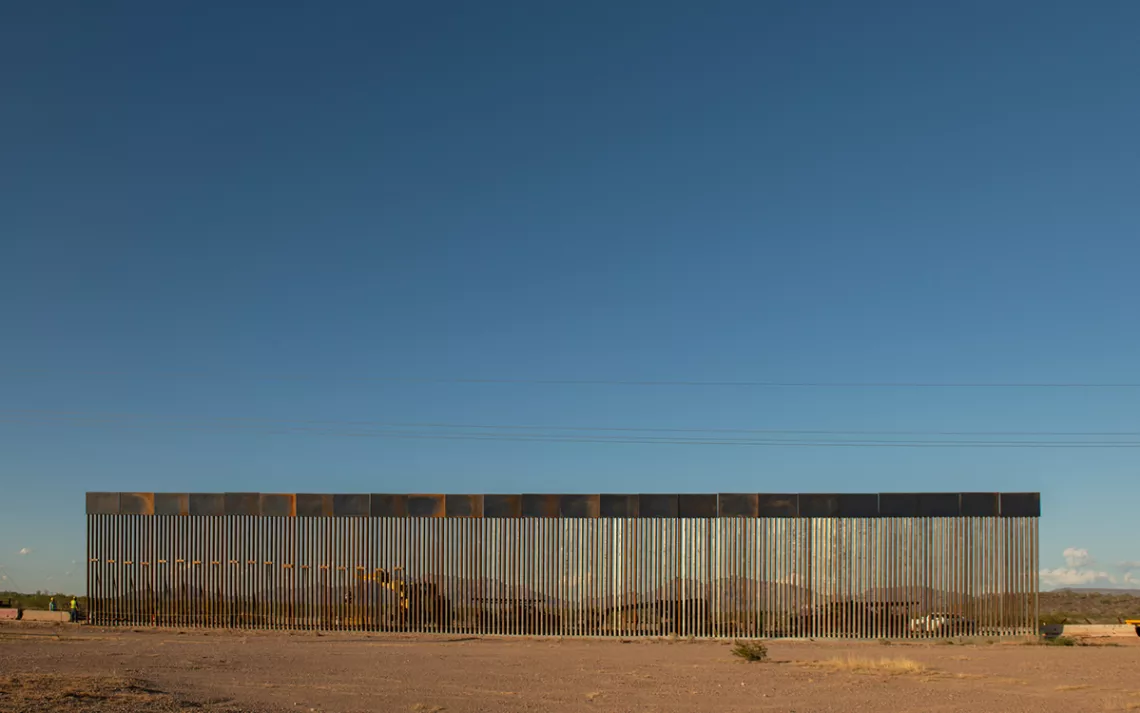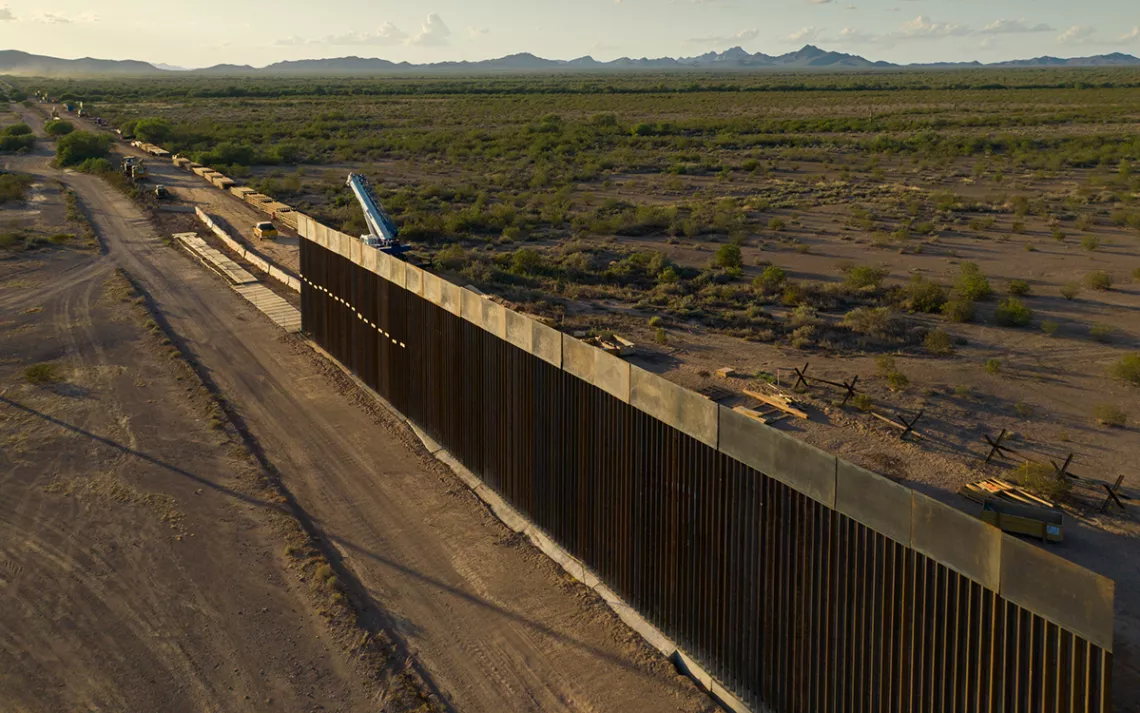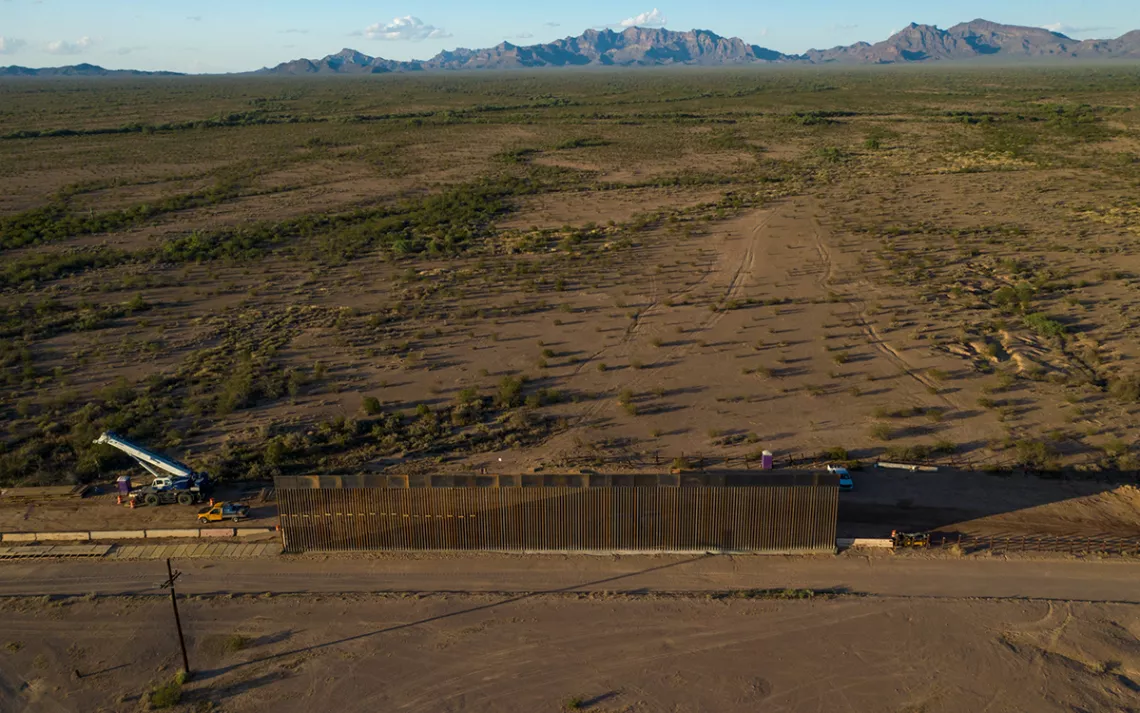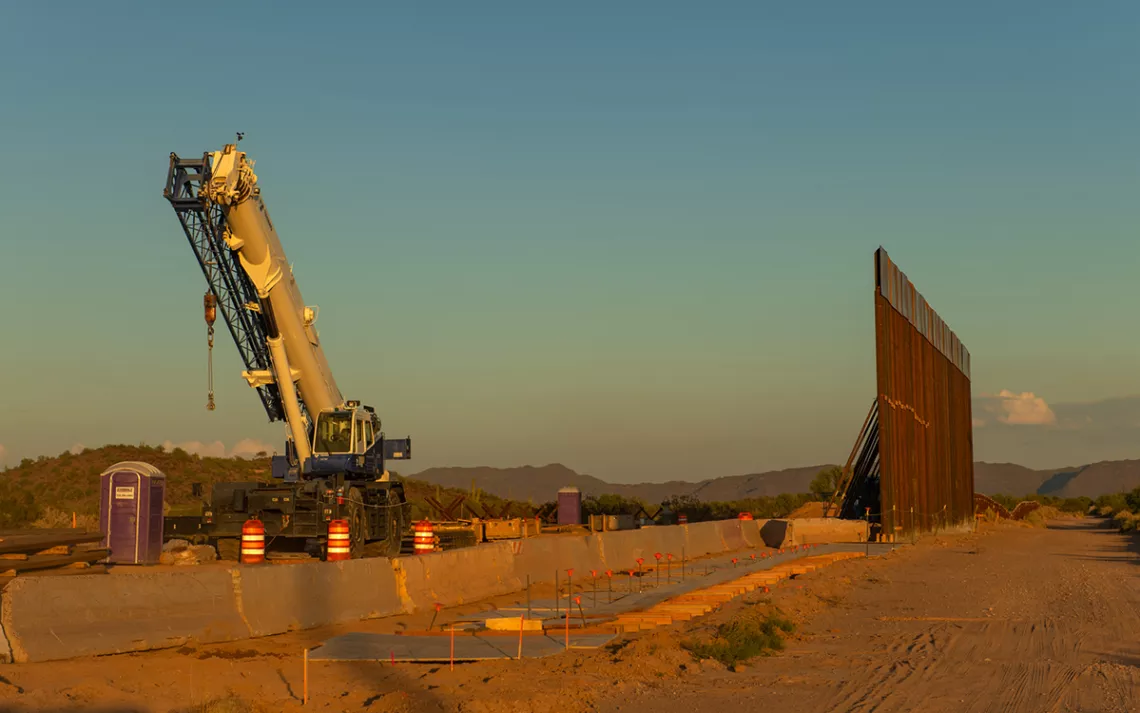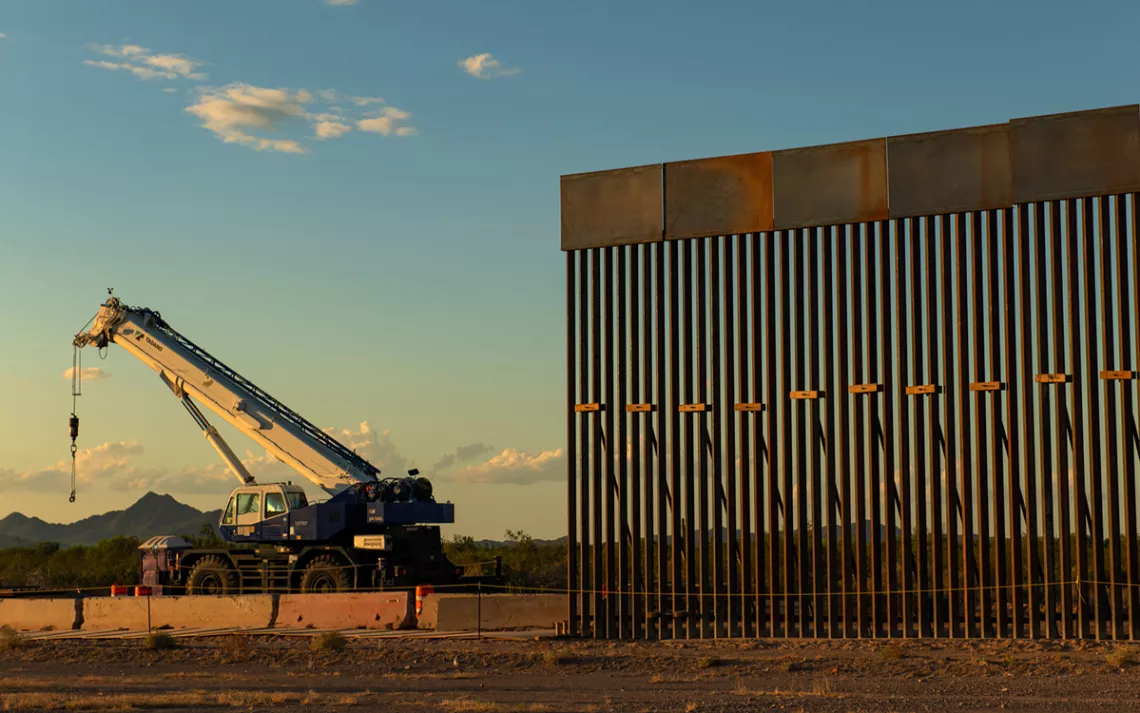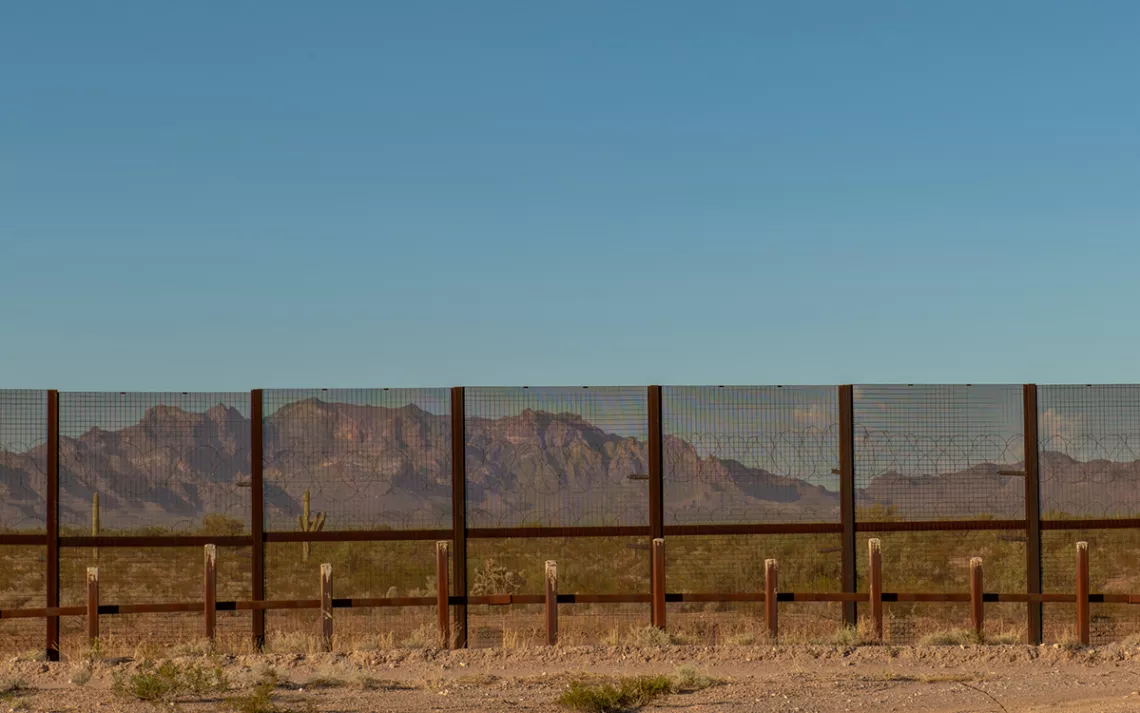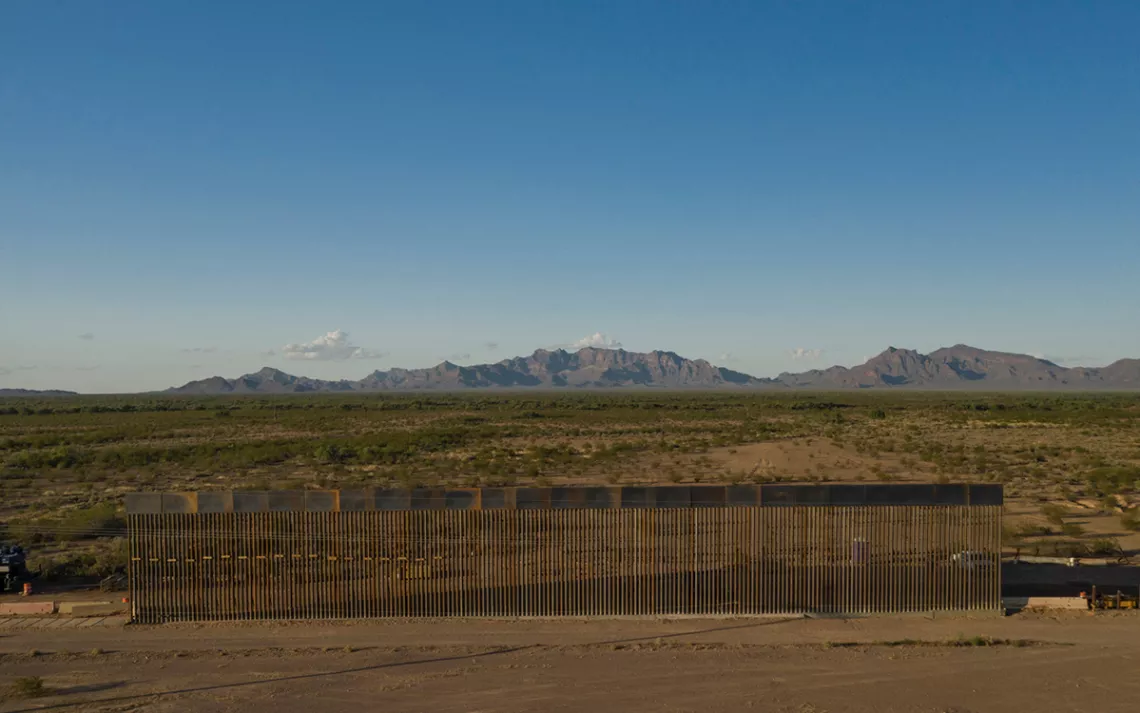Ugly to Behold—This Is What Border Wall Construction Looks Like
Heavy machinery tears up the desert in Organ Pipe Cactus National Monument, Arizona
Photos by Bill Hatcher
In August, the US Customs and Border Patrol began construction on a new section of President Trump’s controversial border wall in Organ Pipe Cactus National Monument, a UNESCO biosphere reserve in Arizona's Sonoran Desert. The conversion of a five-foot-tall vehicle barrier into a 30-foot-high steel-barred structure has been the target of widespread criticism and concerns. Earlier this month, The Washington Post reported that, according to an internal National Park Service report, the border wall construction risks destroying or damaging 22 archaeological sites. Environmentalists say the wall construction will involve unsustainable groundwater withdrawals (as much as 84,000 gallons a day, for cement making) in an arid region already suffering from drought. Heavy machinery will mow down desert cacti, trees, and shrubs, and the resulting edifice will inevitably interrupt wildlife migration.
Yet, despite this notoriety, news organizations and watchdog groups have published almost no images of the wall construction. That’s because Border Patrol agents have succeeded in keeping most photographers and reporters away from the construction zone.
So veteran photojournalist Bill Hatcher came up with a work-around—he would take pictures from the Mexican side of the border. While on assignment for a story that will appear in the January/February print edition of Sierra, Hatcher crossed the border and captured images of the wall construction. These are a few of the photos he took, some with his drone and others on foot.
 The Magazine of The Sierra Club
The Magazine of The Sierra Club
